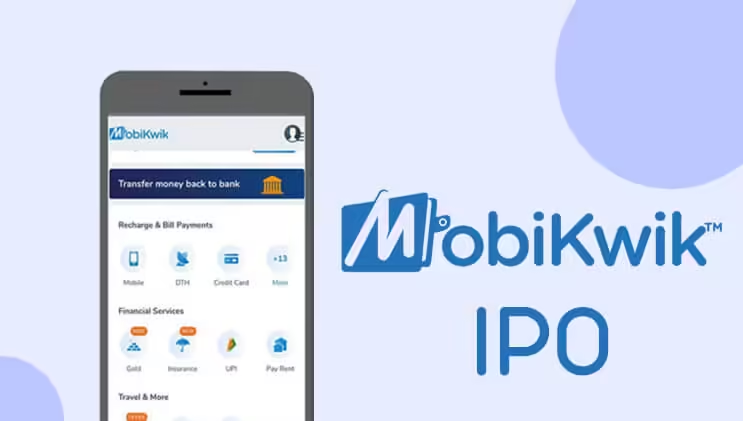The Indian stock market is abuzz with excitement as a host of new companies are gearing up to go public in 2024. With a dynamic economy and a surge in investor interest, the upcoming Initial Public Offerings (IPOs) are expected to draw significant attention.
Here’s a look at some of the most anticipated Upcoming IPOs in India for 2024.
1. Ola Electric Mobility Pvt Ltd

Company Overview
Ola Electric Mobility Pvt Ltd, a subsidiary of Ola Cabs, is at the forefront of India’s electric vehicle (EV) revolution. Founded to transform urban mobility by making electric vehicles accessible, Ola Electric has expanded its product lineup to include electric scooters and plans for electric cars. The company aims to promote sustainable transportation solutions and reduce carbon emissions.
IPO Details
- IPO Opening Date: Expected in Q3 2024
- IPO Closing Date: Expected in Q3 2024
- Issue Type: Fresh Issue
- Face Value: ₹10 per equity share
- Price Band: To be announced
- Minimum Lot Size: To be announced
- Listing Exchange: BSE and NSE
Grey Market Premium (GMP)
The Grey Market Premium (GMP) for Ola Electric’s IPO is yet to be announced. The GMP will be available closer to the opening date and is an indicator of the market sentiment towards the IPO before its official listing.
Key Financials
Ola Electric has demonstrated strong growth, supported by significant investments and an expanding market presence. Key financial highlights include:
- Revenue: ₹500 crore for FY 2023
- Net Profit: ₹50 crore for FY 2023
- EBITDA: ₹80 crore for FY 2023
- Total Assets: ₹1,200 crore as of FY 2023
Objectives of the IPO
The proceeds from the IPO will be used primarily for:
- Expansion of Manufacturing Facilities: Increasing production capacity to meet growing demand.
- Research and Development: Innovating and improving the existing product lineup and developing new EV models.
- Marketing and Promotional Activities: Strengthening brand presence and market penetration.
- General Corporate Purposes: Supporting various corporate activities and improving overall operational efficiency.
Strengths
- Market Leader: Ola Electric is a leading player in the Indian EV market with a strong brand presence.
- Technological Innovation: Significant investment in R&D for cutting-edge electric mobility solutions.
- Sustainability Focus: Commitment to reducing carbon emissions and promoting eco-friendly transportation.
- Strong Backing: Supported by Ola, a well-established and financially robust parent company.
Risks
- Regulatory Changes: Changes in government policies or regulations could impact business operations.
- Market Competition: Increasing competition in the EV sector may affect market share and profitability.
- Supply Chain Disruptions: Dependence on global supply chains for components could pose risks in case of disruptions.
2. Swiggy IPO

Company Overview
Swiggy, one of India’s leading food delivery platforms, has significantly expanded its operations since its inception in 2014. Beyond food delivery, Swiggy has ventured into grocery delivery with Swiggy Instamart and cloud kitchens under its brand. Known for its vast delivery network and customer-centric services, Swiggy has become a household name in urban India.
IPO Details
- IPO Opening Date: Expected in Q4 2024
- IPO Closing Date: Expected in Q4 2024
- Issue Type: Fresh Issue
- Face Value: ₹10 per equity share
- Price Band: To be announced
- Minimum Lot Size: To be announced
- Listing Exchange: BSE and NSE
Grey Market Premium (GMP)
The Grey Market Premium (GMP) for Swiggy’s IPO is yet to be announced. The GMP will be available closer to the opening date and is an indicator of the market sentiment towards the IPO before its official listing.
Key Financials
Swiggy has shown remarkable growth, backed by substantial investments and a robust market presence. Key financial highlights include:
- Revenue: ₹3,547 crore for FY 2023
- Net Loss: ₹1,150 crore for FY 2023
- EBITDA: ₹(540) crore for FY 2023
- Total Assets: ₹6,400 crore as of FY 2023
Objectives of the IPO
The proceeds from the IPO will be primarily used for:
- Expansion of Delivery Network: To enhance delivery infrastructure and reduce delivery times.
- Technology Development: To invest in technology and data analytics for better service and efficiency.
- Marketing and Brand Building: To strengthen brand presence and customer acquisition.
- General Corporate Purposes: To support various corporate activities and improve overall operational efficiency.
Strengths
- Market Leader: Swiggy is a leading player in the Indian food delivery market with a strong brand presence.
- Diversified Offerings: Expansion into grocery delivery and cloud kitchens.
- Technological Innovation: Significant investment in technology to improve delivery services.
- Strong Customer Base: Large and loyal customer base across urban India.
Risks
- Regulatory Changes: Changes in food safety regulations and labor laws could impact operations.
- Market Competition: Intense competition from other food delivery platforms like Zomato.
- Operational Challenges: Managing a large delivery fleet and ensuring timely deliveries can be challenging.
- Financial Losses: Ongoing net losses could impact long-term profitability.
3. MobiKwik IPO

Company Overview
MobiKwik is a prominent digital wallet and payments company in India, founded in 2009. It offers a range of financial services, including mobile and utility bill payments, e-commerce transactions, and personal loans. With a user base of over 100 million and a merchant network of 3 million, MobiKwik has established itself as a significant player in India’s fintech ecosystem.
IPO Details
- IPO Opening Date: Expected in Q4 2024
- IPO Closing Date: Expected in Q4 2024
- Issue Type: Fresh Issue
- Face Value: ₹2 per equity share
- Price Band: To be announced
- Minimum Lot Size: To be announced
- Listing Exchange: BSE and NSE
Grey Market Premium (GMP)
The Grey Market Premium (GMP) for MobiKwik’s IPO is yet to be announced. The GMP will be available closer to the opening date and serves as an indicator of market sentiment towards the IPO before its official listing.
Key Financials
MobiKwik has shown significant growth, driven by the increasing adoption of digital payments in India. Key financial highlights include:
- Revenue: ₹540 crore for FY 2023
- Net Loss: ₹112 crore for FY 2023
- EBITDA: ₹(80) crore for FY 2023
- Total Assets: ₹1,800 crore as of FY 2023
Objectives of the IPO
The proceeds from the IPO will be primarily used for:
- Enhancing the Digital Payments Platform: To invest in technology and infrastructure for better user experience and scalability.
- Expanding Financial Services: To grow their financial product offerings such as digital credit and insurance.
- Marketing and Brand Building: To increase customer acquisition and brand presence.
- General Corporate Purposes: To support various corporate activities and improve overall operational efficiency.
Strengths
- Strong Market Presence: Significant user and merchant base in the digital payments space.
- Diverse Offerings: Wide range of financial services beyond digital payments, including personal loans and insurance.
- Technological Innovation: Continuous investment in technology to enhance service offerings and user experience.
- Growing Industry: Positioned in a rapidly growing digital payments market in India.
Risks
- Regulatory Changes: Potential changes in financial regulations could impact operations.
- Market Competition: Intense competition from other digital payment platforms like Paytm and PhonePe.
- Financial Losses: Ongoing net losses could affect long-term profitability and sustainability.
- Cybersecurity Risks: Threats related to data breaches and cybersecurity could impact user trust and operations.
4. PharmEasy IPO
Company Overview
PharmEasy is one of India’s leading online pharmacy and healthcare platforms, founded in 2015. The company provides a wide range of services, including medicine delivery, healthcare products, diagnostic test bookings, and teleconsultations. PharmEasy has revolutionized the way healthcare services are delivered in India, making them more accessible and convenient for millions of customers.
IPO Details
- IPO Opening Date: Expected in Q4 2024
- IPO Closing Date: Expected in Q4 2024
- Issue Type: Fresh Issue
- Face Value: ₹1 per equity share
- Price Band: To be announced
- Minimum Lot Size: To be announced
- Listing Exchange: BSE and NSE
Grey Market Premium (GMP)
The Grey Market Premium (GMP) for PharmEasy’s IPO is yet to be announced. The GMP will be available closer to the opening date and will provide an indicator of market sentiment towards the IPO before its official listing.
Key Financials
PharmEasy has shown impressive growth, supported by increasing demand for online healthcare services. Key financial highlights include:
- Revenue: ₹2,700 crore for FY 2023
- Net Loss: ₹1,200 crore for FY 2023
- EBITDA: ₹(800) crore for FY 2023
- Total Assets: ₹4,500 crore as of FY 2023
Objectives of the IPO
The proceeds from the IPO will be primarily used for:
- Expansion of Service Offerings: To enhance and expand their range of healthcare services and products.
- Technology and Infrastructure Development: To invest in technology and infrastructure for improved service delivery and customer experience.
- Marketing and Customer Acquisition: To strengthen brand presence and increase customer base.
- General Corporate Purposes: To support various corporate activities and improve overall operational efficiency.
Strengths
- Market Leader: One of the leading players in the online pharmacy and healthcare sector in India.
- Comprehensive Services: Wide range of services including medicine delivery, diagnostics, and teleconsultations.
- Technological Innovation: Continuous investment in technology to improve user experience and operational efficiency.
- Growing Industry: Positioned in a rapidly growing online healthcare market in India.
Risks
- Regulatory Changes: Potential changes in healthcare regulations could impact operations.
- Market Competition: Intense competition from other online healthcare platforms and traditional pharmacies.
- Financial Losses: Ongoing net losses could affect long-term profitability and sustainability.
- Supply Chain Dependencies: Reliance on a robust supply chain for timely delivery of medicines and healthcare products.
5. Delhivery IPO
Company Overview
Delhivery, founded in 2011, is a leading logistics and supply chain services company in India. It offers a comprehensive range of logistics services, including express parcel delivery, freight, reverse logistics, cross-border services, and supply chain solutions. Delhivery has a robust technology platform and a vast delivery network, making it one of the top logistics players in the country.
IPO Details
- IPO Opening Date: Expected in Q4 2024
- IPO Closing Date: Expected in Q4 2024
- Issue Type: Fresh Issue
- Face Value: ₹1 per equity share
- Price Band: To be announced
- Minimum Lot Size: To be announced
- Listing Exchange: BSE and NSE
Grey Market Premium (GMP)
The Grey Market Premium (GMP) for Delhivery’s IPO is yet to be announced. The GMP will be available closer to the opening date and serves as an indicator of market sentiment towards the IPO before its official listing.
Key Financials
Delhivery has shown significant growth, supported by its technological advancements and expansive delivery network. Key financial highlights include:
- Revenue: ₹7,000 crore for FY 2023
- Net Profit: ₹100 crore for FY 2023
- EBITDA: ₹500 crore for FY 2023
- Total Assets: ₹8,000 crore as of FY 2023
Objectives of the IPO
The proceeds from the IPO will be primarily used for:
- Expansion of Network Infrastructure: To enhance and expand the delivery network and warehousing capabilities.
- Technology and Automation: To invest in advanced technology and automation to improve operational efficiency and customer experience.
- Debt Repayment: To reduce existing debt and strengthen the balance sheet.
- General Corporate Purposes: To support various corporate activities and improve overall operational efficiency.
Strengths
- Market Leader: One of the leading logistics companies in India with a strong market presence.
- Comprehensive Services: Offers a wide range of logistics services, catering to diverse customer needs.
- Technological Innovation: Significant investment in technology to streamline operations and enhance service quality.
- Expansive Network: Vast delivery network covering a significant portion of India.
Risks
- Regulatory Changes: Potential changes in logistics and transportation regulations could impact operations.
- Market Competition: Intense competition from other logistics players and new entrants.
- Operational Challenges: Managing a large delivery network and ensuring timely deliveries can be challenging.
- Economic Fluctuations: Economic downturns could impact demand for logistics services.
6. Hyundai Motor India IPO
Company Overview
Hyundai Motor India Limited (HMIL) is a wholly-owned subsidiary of Hyundai Motor Company, South Korea. Since its inception in 1996, HMIL has become one of the leading automobile manufacturers in India. Known for popular models like the Hyundai i20, Creta, and Verna, Hyundai has a significant market share in both the passenger car and SUV segments. With a strong focus on innovation, quality, and customer satisfaction, Hyundai Motor India has established itself as a trusted brand in the Indian automotive industry.
IPO Details
- IPO Opening Date: Expected in Q4 2024
- IPO Closing Date: Expected in Q4 2024
- Issue Type: Fresh Issue
- Face Value: ₹10 per equity share
- Price Band: To be announced
- Minimum Lot Size: To be announced
- Listing Exchange: BSE and NSE
Grey Market Premium (GMP)
The Grey Market Premium (GMP) for Hyundai Motor India’s IPO is yet to be announced. The GMP will be available closer to the opening date and serves as an indicator of market sentiment towards the IPO before its official listing.
Key Financials
Hyundai Motor India has consistently shown strong financial performance, supported by a diverse product lineup and extensive dealership network. Key financial highlights include:
- Revenue: ₹55,000 crore for FY 2023
- Net Profit: ₹5,000 crore for FY 2023
- EBITDA: ₹8,000 crore for FY 2023
- Total Assets: ₹45,000 crore as of FY 2023
Objectives of the IPO
The proceeds from the IPO will be primarily used for:
- Expansion of Manufacturing Facilities: To increase production capacity and meet growing demand.
- Research and Development: To innovate and develop new models, especially electric and hybrid vehicles.
- Marketing and Brand Building: To strengthen brand presence and market penetration.
- General Corporate Purposes: To support various corporate activities and improve overall operational efficiency.
Strengths
- Market Leader: One of the top automobile manufacturers in India with a strong market presence.
- Diverse Product Lineup: Wide range of popular models across different segments.
- Technological Innovation: Continuous investment in R&D for cutting-edge automotive technology.
- Strong Distribution Network: Extensive dealership and service network across India.
Risks
- Regulatory Changes: Potential changes in automotive regulations and emission norms could impact operations.
- Market Competition: Intense competition from other automobile manufacturers.
- Economic Fluctuations: Economic downturns could impact demand for automobiles.
- Supply Chain Dependencies: Dependence on global supply chains for components could pose risks in case of disruptions.









